LG has a ton of exciting tech coming this year, from a new batch of OLEDs to a whole new type of TV it's calling QNED. But for a lot of folks, buying a TV from the previous year is a great way to get the latest tech upgrades without paying top dollar. So it wouldn’t be outrageous to think of buying one of the 2020 NANO90 LED TVs, especially if you find them on sale. Unfortunately, this series isn’t the best performer in its price range, and there’s some stiff competition this year. Testing revealed that the NANO90 suffers from overly-bright shadow tones—a problem that commonly affects LCD TVs that use IPS panels. So while the NANO90 has good viewing angles and better-than-average light effusion, it also doesn't look great in a traditional movie-watching environment—especially for what you’re paying.
If you just want to watch sports or play bright, cartoony games on it, the NANO90 has an array of great features and is a decent performer by other metrics. That said, if you want a TV that can deliver the filmic depth and high contrast of the movie theater experience, we recommend buying either the 2020 TCL 6-Series for about $300 less or the 2020 Vizio P-Series Quantum for about the same price. You could even snag a relatively huge jump in picture quality if you got the the 2020 Vizio P-Series Quantum X, which (in its 65-inch size) is only a couple hundred dollars more.
Editor's note: Due to COVID-19 complications, this review leans heavily on test results in lieu of hands-on time with the TV.
About the LG NANO90 NanoCell LED TV series
LG’s NANO90 NanoCell 4K LED TV series comes in four screen sizes:
- 55-inch (LG 55NANO90UNA), $1,049.99 MSRP
- 65-inch (LG 65NANO90UNA), $1,499.99 MSRP
- 75-inch (LG 75NANO90UNA), $2,499.99 MSRP
- 86-inch (LG 86NANO90UNA), $3,299.99 MSRP
The NANO90 series is one of the upper mid-range options from LG’s 2020 lineup of TVs, and generally you can expect the same level of performance regardless of which size you’re buying. However, it’s worth mentioning that this series utilizes full-array local dimming backlights, and depending on arrangement and utilization of the zones, you may notice differences in things like backlight uniformity depending on which size NANO S90 you buy.
Otherwise, every TV in this series shares this same set of core specs:
- Resolution: 4K (3,840 x 2,160)
- Display type: IPS LCD panel with NanoCell absorptive layer
- Local dimming: Full-array local dimming (approx. 32 zones)
- HDR support: HDR10, Dolby Vision, HLG
- Dolby Atmos: Yes
- eARC support: Yes
- Native refresh rate: 120 Hz
- Smart platform: Yes (webOS)
- Color: DCI-P3 color space/10-bit chroma resolution
- Processor: a7 Gen 3 Processor 4K
- Variable Refresh Rate (VRR): Yes
- Auto Low-Latency Mode (ALLM): Yes
- Other features: 10-bit dithering, FreeSync, Amazon Alexa, Google Assistant, Apple AirPlay 2
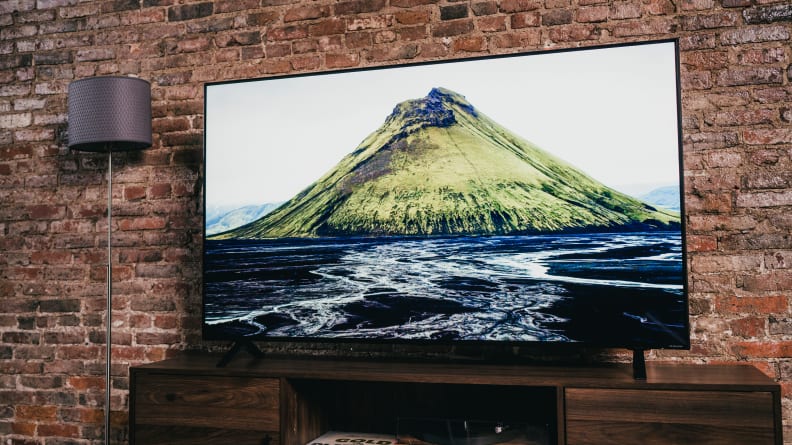
Credit: Reviewed / Jackson Ruckar
LG's NANO90 NanoCell LED TV series is available in four screen sizes, starting at 55 inches.
Seeing as how the NANO90 is one of the top NanoCell TV series in LG’s 2020 TV lineup, all of these TVs are stuffed to the gills with features. Part of their higher-than-average price tag owes to the inclusion of things like eARC compatibility, Dolby Atmos, and 120 Hz refresh rates—something to consider if you don’t think you’ll take advantage of those features.
Performance Data
We assess TV performance via the use of scientific instrumentation in a controlled lab environment, gathering performance benchmarks with light and color meters just like a professional TV calibrator would. However, before the testing process can start, we give each TV we test roughly 24 hours of “warm up” time using a mild stress pattern in order to ensure that the data we’re gathering is as accurate as possible.
While testing the LG 65NANO90UNA in SDR, we gathered contrast and color benchmarks while the TV was in the “ISF Expert (Bright Room)” picture mode. For HDR, we used the “HDR Cinema” picture mode.
To gather contrast data, we use a combination of the industry-standard ANSI checkerboard pattern and halation/loading patterns, and gather color data using the rec.709 and DCI-P3 color gamut reference points. Patterns are powered by QuantumData’s 780A signal generator, and we use CalMan Ultimate software to tabulate the data that’s gathered.
I’ll editorialize the LG 65NANO90UNA’s results below, but here are the most important numbers up front:
- SDR Contrast (ANSI Checkerboard): 274.10 nits / 0.159 nits
-
HDR Contrast (ANSI Checkerboard): 333.20 nits / 0.129 nits
-
HDR Peak Brightness: 580.50 nits (40% white window)
-
SDR Color Gamut Coverage: 100% (rec.709)
-
HDR Color Gamut Coverage: 88.40% (DCI-P3)
Connectivity
Like most modern, higher-end televisions, this LG features a healthy selection of AV inputs and ports. You’ll find them nestled in a couple of cutouts on the back/side of the panel.
- 4 x HDMI (HDCP 2.2, eARC)
- 3 x USB 2.0 ports
- RF (cable) input
- AV (component/composite input), splitter required but not included
- Ethernet (LAN) input
- Optical (digital) audio output

Credit: Reviewed / Jackson Ruckar
The NANO90 TVs give you plenty of HDMI and USB inputs to work with, though if you want to use a component/composite (AV) device, you'll need a splitter cable.
As you can see, there are plenty of HDMI and USB ports available here, but it’s worth noting again that the breakout/splitter cable you’d need to hook up a pre-HDMI source device isn’t included, so if you’re hoping to hook up an older video game console or VCR, you’ll need to do the legwork for that one on your own.
What We Like
Great for sports and brighter rooms
The most notable thing about LG’s LED/LCD TV lineup is that they’re some of the only name-brand, high-end 4K LED TVs that use IPS style LCD panels. While most TVs these days use VA (vertical alignment) style LCD panels, the NANO90 models (like most of LG’s 2020 NanoCell lineup) are of the IPS (in-plane switching) variety. This has pros and cons.
Without getting too into the weeds about how IPS and VA work, generally TVs and computer monitors with IPS panels have one major advantage over the VA types: much wider viewing angles, both vertically and horizontally. They also tend to have an easier time producing accurate color saturation (a fact we corroborated during the testing process).
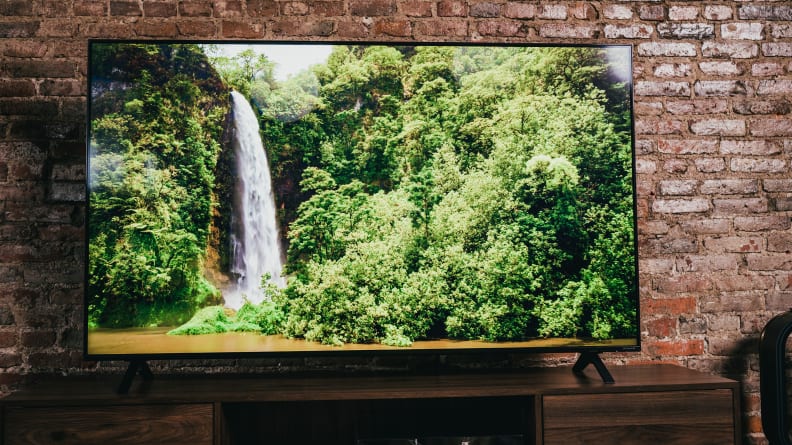
Credit: Reviewed / Jackson Ruckar
The NANO90 has an IPS LCD panel, which gives it better than average viewing angles.
While the NANO90 isn’t the brightest TV you can buy, it’s bright enough for the average living room, and its wide viewing angles make it a decent choice for group screenings in a big room that hasn’t been specially darkened for viewing.
Because all of the TVs in this series feature 120 Hz refresh rates (as opposed to the more common 60 Hz refresh rate), they’re also a good choice for more motion-intensive content like sports and video games. While the NANO90’s input lag results weren’t great in most of its picture modes, we measured a respectable 19 ms in “Game” mode.
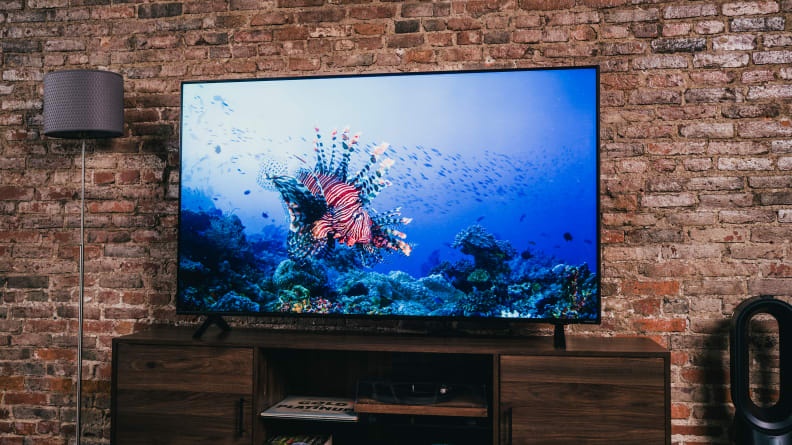
Credit: Reviewed / Jackson Ruckar
Time in the lab revealed excellent color saturation and white balancing, though color during HDR could be better.
The NANO90 is also outfitted with two next-gen TV features that have been specially designed for gaming: variable refresh rate (VRR) and auto low-latency mode (ALLM). While not all of the NANO90’s HDMI inputs are HDMI 2.1, the ones that are compatible are labeled as such (4K @ 120 Hz), and if you’ve got a next-gen console like a PlayStation 5 or Xbox Series X you’ll be able to take advantage of some of the better gaming-related features available on TVs right now.
The NANO90’s poor black levels—more on those below—mean that it might not be great for games with a more cinematic flair, but you can at least trust that it is decently colorful and “fast” enough for a wide range of content, like nature docs, sports programming, and FPS-style games.
Sleek, slim, and trim
As noted in the specs section, the NANO90 TVs utilize full-array local dimming (FALD) backlights. This lends them some amount of pedigree, as generally any FALD-equipped TV is going to perform better than its simpler Direct or Edge LED counterparts.

Credit: Reviewed / Jackson Ruckar
Despite having a full-array backlight, the NANO90 is still a slim, sleek television. The feet are wide-set, so measure your tabletop stand.
One disadvantage of FALD TVs is that they tend to be a lot thicker in profile, making them less ideal for aesthetic choices like mounting them on the wall. However, despite its backlight, the NANO90 TVs are still only a little under three inches thick in profile, and their trim bezels give them a clean, modern appearance. Likewise, the sturdy feet are matching in hue, but take note that (like many modern TVs) they’re set out far to the edges of the panel, so you’ll want to measure your TV stand if you’re not wall-mounting the NANO90.
The cutout for the AV ports on the back of the TV helps keep cables organized and your viewing space decluttered. As for the remote, you’re getting the standard LG Magic Remote here, so-called because it uses IR signals to cast a cursor onto the screen for interacting with the software. Remember the old Nintendo Wii-mote? It works like that.
webOS: love it or hate it
When LG’s proprietary TV smart platform, webOS, first debuted many moons ago, we were pretty enamored with it. Since then, we’ve shifted our stance to concede that a hyper-simple approach to streaming like a Roku TV or media streaming device is generally a better long-term solution for most folks.

Credit: Reviewed / Jackson Ruckar
LG's webOS platform features big clickable buttons and a perimeter layout, making it easy to use with the included Magic Remote.
However, as a part of this TV series’ whole kit, webOS is still better than the average TV smart platform. It’s really all about the Magic Remote, which (as mentioned in the previous section) casts a cursor onto the screen.
The software UI is rendered exactly to be easy to use with an on-screen cursor, featuring big, clickable buttons and apps. In general, webOS is easy to use, whether you’re scrolling through TV picture modes or rearranging apps in the smart bar along the bottom of the screen.
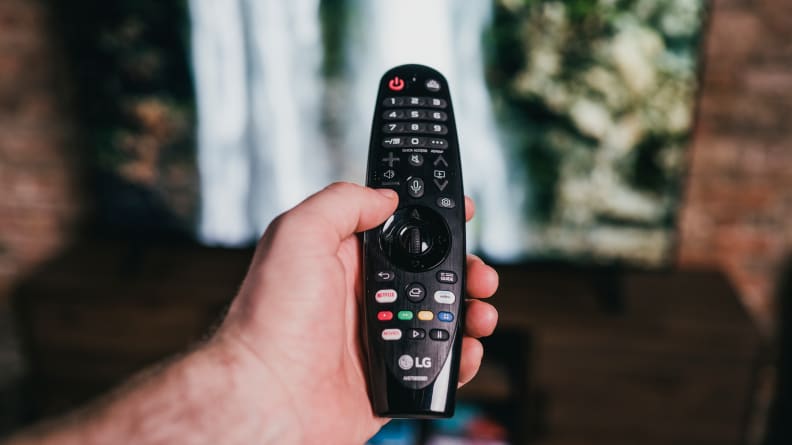
Credit: Reviewed / Jackson Ruckar
The included Magic Remote works much like the old Nintendo Wii-mote, casting a cursor onto the screen via infrared tech.
That said, some people find controlling the cursor to be a crapshoot, and it’s true that other infrared sources can even interfere with the cursor’s travel and accuracy on the screen. But for a lot of people—especially folks who wouldn’t consider themselves technophiles—webOS is a lot easier to navigate and interact with than some of the more cold, complex platforms out there.
While I would never suggest you buy this TV for webOS alone, it ultimately isn’t a detriment, which is the best we generally expect from a TV’s smart functionality.
As features go, you’re getting your money’s worth
Due to COVID complications, we haven’t been able to exhaustively test the extra features of many of the TVs we’ve reviewed in the last year, but a glance over the NANO90’s list of specs and features is promising nonetheless. While there are much more expensive TVs out there, the NANO90 sets aren’t cheap compared to some of their competition, and the list of compatibilities and functions are part of what you’re paying for.
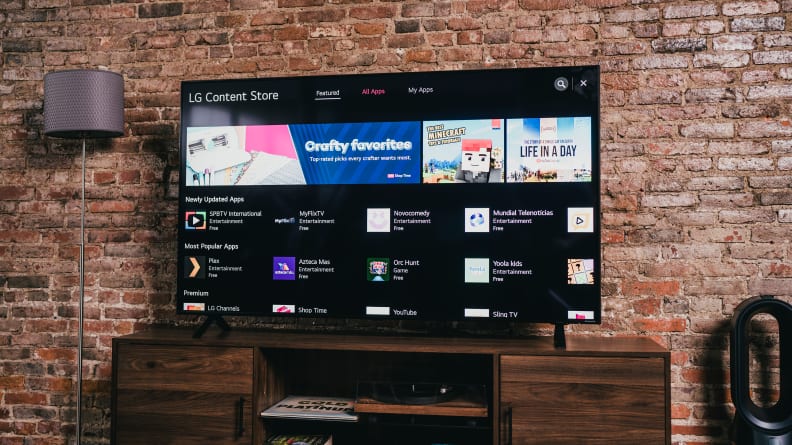
Credit: Reviewed / Jackson Ruckar
The NANO90 TVs are stuffed with next-gen features like Dolby Vision and Dolby Atmos compatibility, and all of them have 120 Hz refresh rates.
I’m not just talking about things like Amazon Alexa or Google Assistant compatibility (though you are getting that here). Despite not being an amazing HDR TV, you’re still getting compatibility with most HDR formats (HDR10, Dolby Vision, and HLG); you’re also getting Dolby Atmos functionality and eARC, two audio-related features that anyone with a vested interest in their audio setup will be glad to have.
Likewise, the already-mentioned 120 Hz refresh rate is a welcome spec regarding many use cases and content types, while the full-array local dimming backlight aids in avoiding the typical pain points associated with LED.
What We Don't Like
Almost unacceptable black levels
All people—from TV reviewers to the average TV watcher—prefer TV with high contrast, meaning a lot of differentiation between the screen’s darkest and brightest elements. This is the main reason OLED TVs are lauded so consistently. This isn’t a subjective preference: it’s literally the science of how your eyes work.
And that’s one area where the NANO90 fails pretty hard, though it owes this performance to the same IPS panel I was praising just a few paragraphs ago. In both SDR and HDR picture modes, we measured an average black level of around 0.1 nits, which is closer to gray than true black.
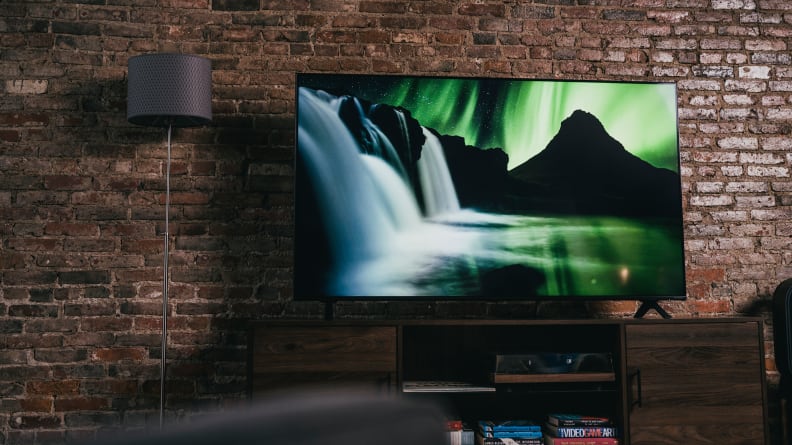
Credit: Reviewed / Jackson Ruckar
The NANO90's IPS panel means its black levels are sometimes closer to dark gray than true black, which make it a dicey choice for dim/dark room viewing.
This doesn’t just make for a flat picture: it means that any time the TV’s liquid crystal is supposed to be closed up tightly and blocking the backlight, it is letting a lot of it bleed through and pollute the picture.
This is why, while the NANO90 is probably great for brighter content like nature docs, sports, and certain video games, it may really disappoint cinephiles and movie lovers. While lots of devices don’t need high contrast to display their expected content properly (whether that be apps on your smartphone or websites on your laptop), we expect big flat-screen TVs to be able to make movies and high-production content look good, and to be dark enough for a movie theater-like viewing environment.
In this regard, the NANO90 fails. I may be a bit old school in this conception of how a TV should function, but it’s a hard data point to ignore when LG is asking hundreds more for this TV than certain competitors whose TVs can operate equally well in bright and dark environments.
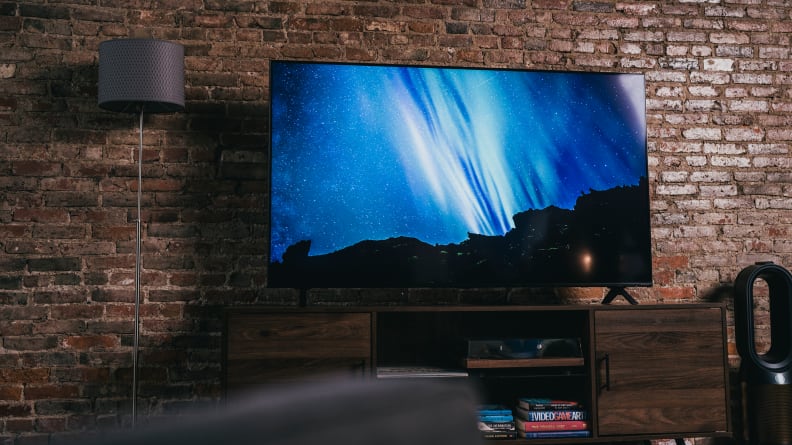
Credit: Reviewed / Jackson Ruckar
While the NANO90 has a lot of great features and has some strong picture quality areas, its shallow contrast makes it difficult to recommend.
One caveat we would note is that the NANO90 TVs do have full-array local dimming panels, so the poor black levels we measured while using the ANSI checkerboard pattern are not what you’re always going to get.
Thanks to the local dimming, scenes with lower APLs (average picture levels)—meaning scenes where the average brightness of the entire screen is dimmer rather than brighter—will net you better black levels overall. The same is true of scenes wherein some majority quadrant of the screen is dark or black: these won’t have that charcoal/gray appearance. LG deserves kudos for fitting the NANO90 models with full-array local dimming backlights, but that’s also part of what makes them expensive. The addition does remedy the IPS-related poor black level to some degree, but testing has shown that it can only do so much, and your picture quality experience may vary from scene to scene more than is ideal.
Not a great pick for HDR content
There are some TVs in this price range (and even cheaper) that offer very high brightness, wide contrast, and highly saturated colors, making them viable if not excellent HDR TVs. The NANO90 is not one of these TVs, unfortunately.
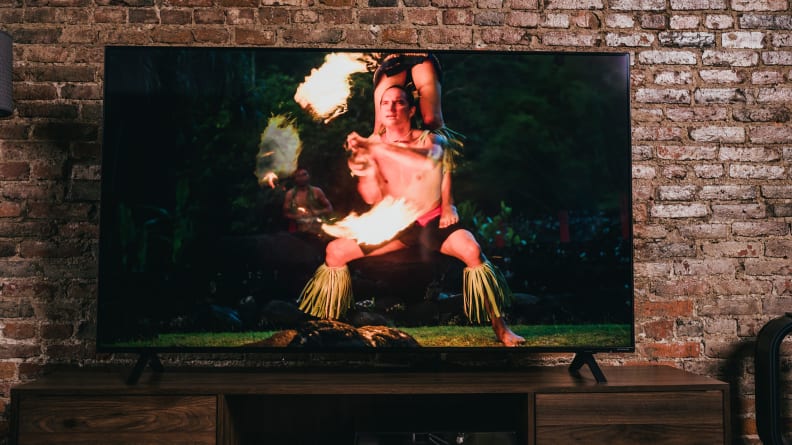
Credit: Reviewed / Jackson Ruckar
The NANO90's inconsistent and occasionally over-bright black levels make it a sub-par choice for viewers interested in great HDR viewing.
While its noted peak brightness of just under 600 nits is great, the actual contrast you’re getting is notably shallow because of its poor black levels. And because it’s a FALD TV with a lower dimming zone count, any attempt at high-luminance specular highlights means either risking backlight bleed or settling for HDR that’s unimpressive in terms of brightness.
But luminance aside, it also isn’t terribly colorful. While LG’s NanoCell tech helps to remove unwanted light/color bleed to some degree, it doesn’t seem to do much in order to boost color saturation (which is probably why the company finally started producing TVs with quantum dots in 2021). The NANO90 nails the basic “standard” color space, but with somewhat limited brightness, and without color-boosting technology like quantum dots in tow, it doesn’t get nearly as colorful as some of its competition.
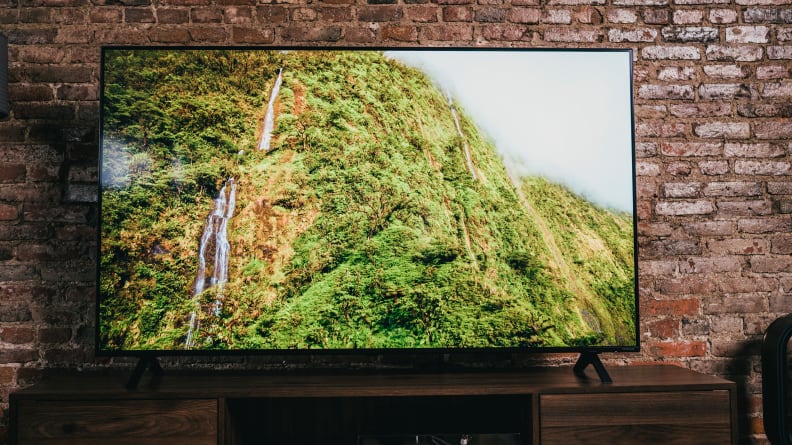
Credit: Reviewed / Jackson Ruckar
Without any color-boosting tech (such as quantum dots), the NANO90 doesn't cover as much of the DCI-P3 color space (for HDR) as some of the competition.
However, that’s not to say you won’t enjoy HDR games on this TV, if that’s your aim. While it doesn’t get bright enough to make your jaw drop, the chromatic and electro-optical resolution enhancement provided by HDR still means that content will look better than it would in non-HDR (as long as everything is set up properly, at least). But if you’re really looking for a more efficacious HDR display, there are better options that cost the same or less than this TV series.
Should You Buy It?
No—it’s too expensive for the performance you’re getting
It’s hard to outright recommend a TV with an IPS panel, even when it does so many things well, because of how important black level and contrast are to things like movies, high-production TV content, and certain video games: these are often the “bread and butter” of TV performance, and the NANO90 falls short here.
It would be easy to forgive that shortcoming if someone just wanted a big screen with wide viewing angles and good color production, but LG is rightfully charging a good bit for the inclusion of premium compatibilities like Dolby Vision, Dolby Atmos, 120 Hz refresh rates, and HDMI 2.1 functionality. On paper, the NANO90 is a bit too feature-rich for a “sports den” type TV, but it also lacks the performance chops to be optimally functional in both dark and bright viewing environments.
The NANO90 lacks the performance chops for dark viewing environments.
When a TV has good black levels but is too dim, like many of the early OLEDs, it’s not too hard to buy light-blocking curtains or turn off some lamps around the room to accommodate it. But if a TV just doesn’t look good on movie night, there’s not much you can do about it.
If that didn’t already make the NANO90 a bit of a tough sell, it’s worth noting that for what you’re paying, there are brighter TVs with better color saturation and better black levels for the same or even less money. LG wants $1,200 for the 65-inch NANO90, but you can get the 65-inch TCL 6-Series (2020) for under $1,000, or the incredible 65-inch Vizio P-Series Quantum X (2020) for only a couple hundred more.
Meet the testers
Lee has been Reviewed's point person for most television and home theater products since 2012. Lee received Level II certification in TV calibration from the Imaging Science Foundation in 2013. As Editor of the Home Theater vertical, Lee oversees reviews of TVs, monitors, soundbars, and Bluetooth speakers. He also reviews headphones, and has a background in music performance.
Julia is the Senior Scientist at Reviewed, which means that she oversees (and continually updates) the testing of products in Reviewed's core categories such as televisions, washing machines, refrigerators, and more. She also determines the testing methods and standards for Reviewed's "The Best Right Now" articles.
Checking our work.
We use standardized and scientific testing methods to scrutinize every product and provide you with objectively accurate results. If you’ve found different results in your own research, email us and we’ll compare notes. If it looks substantial, we’ll gladly re-test a product to try and reproduce these results. After all, peer reviews are a critical part of any scientific process.
Shoot us an emailFebruary 26, 2021 at 11:05PM
https://ift.tt/2ZWo4sY
LG NANO90 LED TV Review: close, but not quite there - Reviewed
https://ift.tt/3eaxdmA
LG


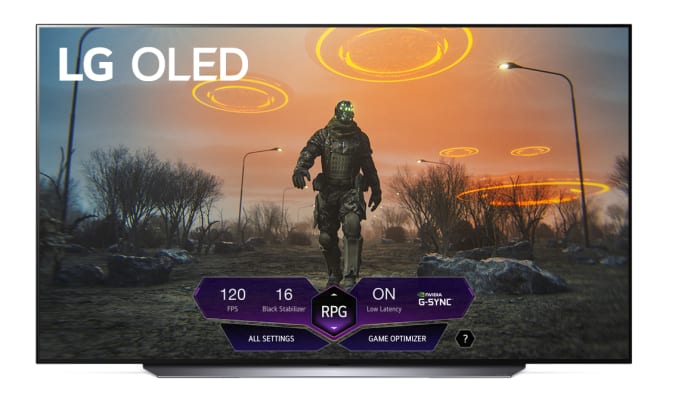
No comments:
Post a Comment